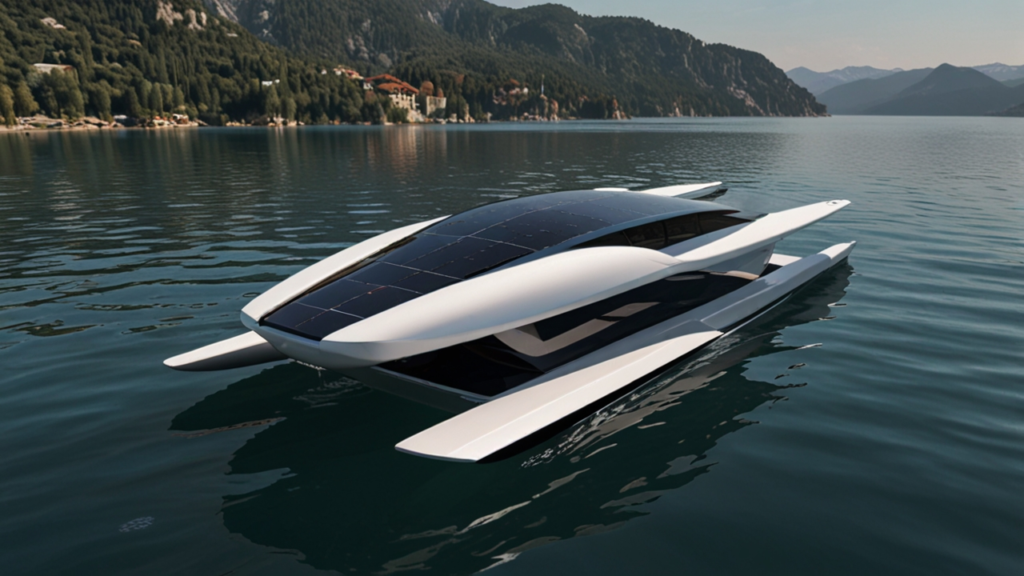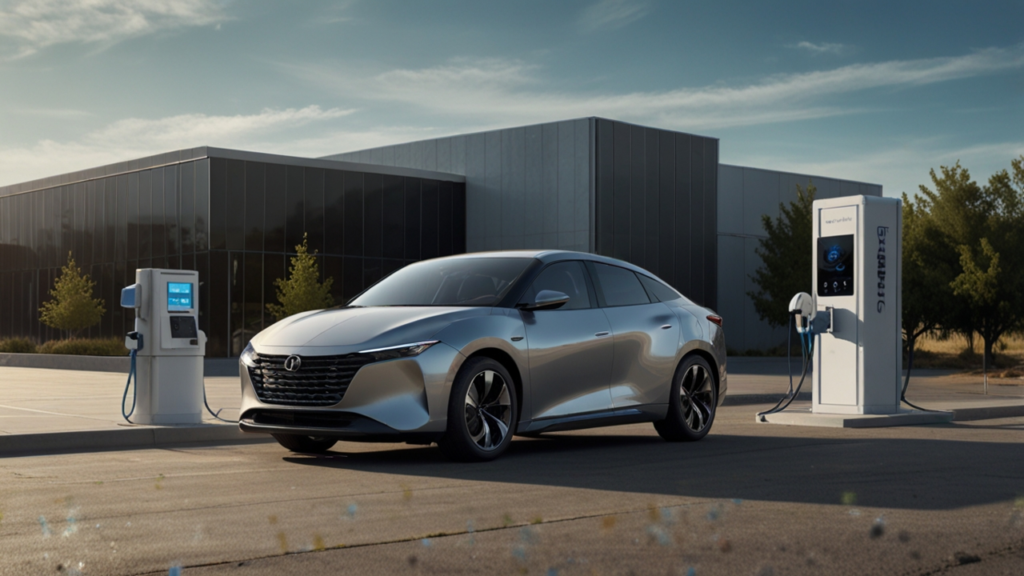Smart Parking Solutions: 6 Efficiency Systems
Urban centers around the world are experiencing a transformation in how parking is managed. Innovations driven by technology now enable more efficient space usage, lower congestion, and improved user experiences. This evolution has sparked a revolution in mobility management.
Technological advancements, from sensor integration to dynamic pricing, have redefined parking management. With applications across cities such as Tokyo, Amsterdam, New York, and Sydney, modern systems have shown measurable improvements in space optimization and traffic reduction. These changes are setting new standards for urban mobility.
In a world where urban density is rising, automated solutions are becoming essential. The rising trend of digital payments and real-time data management is inspiring municipalities to rethink legacy systems. For more information on future mobility innovations, explore Future Mobility.
Table of Contents
- Introduction to Smart Parking Solutions
- Evolution and History of Smart Parking Solutions
- How Automated Parking Enhances Smart Parking Solutions
- Urban Mobility Systems and Their Applications
- Real-World Case Studies of Smart Parking Solutions
- IoT Integration in Modern Smart Parking Solutions
- Future Trends: Space Optimization and Beyond
Introduction to Smart Parking Solutions Smart Mobility
Defining the New Age Parking System
The emergence of innovative parking systems defines a new era in urban management. Driven by advances in digital technology and responsive city planning, these solutions integrate real-time data to optimize parking availability. While historically parking was managed manually using coin meters and physical enforcement, today’s systems are automated and data-driven.
According to a detailed study on smart parking measures from Mobipar 2025, real-time sensors combined with cloud-based platforms allow cities to dynamically adjust parking conditions. This modern approach transforms traditional methods into streamlined services that enhance user convenience and operational efficiency.
Urban areas increasingly rely on these systems to manage millions of vehicles with improved occupancy tracking and efficient use of available space. Could the implementation of these technologies be the key to solving future traffic congestion challenges?
Key Components in Modern Systems
Modern systems integrate various technologies to deliver an optimized parking management service. These technologies include real-time sensors, AI-powered analytics, mobile application interfaces, and contactless payment gateways. The integration of these tools ensures that drivers can locate, reserve, and pay for parking spaces seamlessly.
A significant feature is dynamic pricing, which adjusts parking fees based on current demand, time of day, or special events. Such functionality not only maximizes revenue but also encourages better turnover of spaces. In addition, systems incorporate user-friendly mobile apps that make parking decisions data-driven and efficient.
Innovative approaches from detailed research and reports (for example, Conurets insights) emphasize the importance of comprehensive sensor networks and data processing in these ecosystems. In your opinion, how can further technology integration revolutionize urban parking even more?
Thought-provoking question: Are you ready to embrace a transformation that changes the way we park forever?
Evolution and History of Smart Parking Solutions Urban Transportation
The Journey from Manual Systems to Automation
Residential and commercial areas once relied on rudimentary parking systems, with manual enforcement and outdated coin-operated meters dominating the scene. As urbanization intensifies, the inadequacies of these legacy systems became increasingly evident. Early innovations began in the 1960s in Japan, where automated parking systems utilized mechanical lifts to maximize ground space.
The transformation continued into the 1980s in Europe, with countries like Germany and the Netherlands adopting similar methods. These historical systems laid the groundwork for modern paradigms, as they showcased the need for efficient utilization of limited urban land. For a detailed background, refer to insights provided by Mobipar 2025.
Today, automated parking has evolved into smart and interconnected systems that leverage cloud computing, AI, and sensor technologies. Can you imagine how cities of the future will look with fully automated parking integrated as a standard service?
The Digital Revolution and IoT Emergence
The digital revolution marked a pivotal turning point for parking management. With the advent of digital payments and networked parking meters in the 2000s, the stage was set for more advanced technologies. By the 2010s, the integration of Internet of Things (IoT) sensors enabled real-time monitoring that transformed data into actionable insights.
This shift was accelerated by the global COVID-19 pandemic, as health and safety concerns mandated contactless solutions. Cities around the world adopted remote and automated parking systems. The emergence of IoT in parking facilitated dynamic pricing and automated enforcement, as emphasized in reports on urban mobility transformation. What new benefits do you think the fusion of digital tools and parking management might bring?
Thought-provoking question: Could the continued evolution of these technologies finally end urban parking woes?
How Automated Parking Enhances Smart Parking Solutions Smart Cities
Automating Payment Systems and Enforcement
Automated parking leverages cutting-edge technology to streamline payment methods and enforcement processes. Systems use license plate recognition (LPR) and contactless payment options, reducing the need for on-site staff and cutting operational costs. This precise automation reduces friction for drivers as they transition seamlessly from finding a spot to completing payment.
Empirical data reveals that cities like Tokyo and Los Angeles have noted significant operational improvements. For example, research indicates that dynamic pricing models can lead to a 10–15% improvement in parking efficiency, as seen in Westminster, London. Such outcomes are detailed in studies like the one found on StreetSecu.
These advancements reduce parking search times, which further alleviates congestion. How might further automation shift the expectations of daily commuters in urban settings?
Enhancing User Experience through Mobile Integration
The introduction of mobile applications has revolutionized the way drivers access and interact with parking systems. Apps now allow users to reserve spaces, receive real-time updates, and make secure payments from their smartphones. This integration not only facilitates convenience but also provides a rich dataset for city planners.
Detailed user reviews and expert analyses indicate that mobile integration is a vital component of today’s parking strategies. The system’s effectiveness has been confirmed by cities like San Francisco (SFpark), which demonstrated a reduction in search time by 43% and a 30% decrease in congestion. These findings are supported by reports on modern urban transportation dynamics.
Mobile solutions connect the user to real-time data, ensuring a smoother overall experience. Have you ever used an app that completely changed the way you perform everyday tasks?
Thought-provoking question: Are mobile innovations the key to unlocking the next phase of urban convenience?
Urban Mobility Systems and Their Applications IoT (Internet of Things)
Integration with Broader Urban Traffic Management
Urban mobility systems now seamlessly integrate parking solutions with city traffic management. By using real-time data from parking sensors, authorities can optimize traffic routing and signal timings. This multidisciplinary approach minimizes congestion and enhances overall flow on busy streets.
Reports indicate that cities like Barcelona and Singapore have significantly improved traffic management by incorporating parking data into their broader urban mobility strategies. For example, one study showcased how data integration reduced downtown congestion by up to 25% in Seoul. Detailed overviews of this are available on Parking Network.
Such systems represent the convergence of smart parking with larger urban planning initiatives. Could our cities eventually become fully data-driven ecosystems that anticipate transportation needs in real time?
Optimizing Resource Utilization to Enhance Efficiency
Integration of parking systems supports resource allocation across urban environments. Data generated from parking sensors helps cities determine peak usage times, which in turn informs infrastructure investment decisions and dynamic pricing strategies. This proactive strategy enhances resource utilization and minimizes waste.
Many municipal initiatives report improved space management and energy consumption when smart solutions are integrated with urban services. For instance, recent experiments in New York have shown that automated payment systems lead to a 20% increase in compliance rates, as outlined by various industry research sources.
This layered information allows urban planners to design better transit systems and improve public safety. How might this integrated data approach transform your local city’s transportation infrastructure?
Thought-provoking question: Can you envision the benefits of a city where every resource is managed in real time?
Real-World Case Studies of Smart Parking Solutions Digital Transformation
Success Stories Across Continents
Case studies from around the world demonstrate striking improvements due to advanced parking systems. In Europe, cities like Amsterdam and Barcelona report up to a 30% reduction in congestion after adopting IoT-based systems that incorporate dynamic pricing and real-time monitoring. Similarly, Westminster in London has experienced an increase of 10–15% in parking efficiency, thanks to automated lane enforcement and smart sensors.
In North America, San Francisco’s SFpark initiative reduced parking search times by 43% and eased traffic congestion by 30%, leading to significant improvements in daily commute experiences. New York’s integrated systems, including automated LPR and mobile payment technologies, offered a compliance rate boost of around 20% in recent years. Detailed analyses on these achievements can be found on Izix.
This data-driven success inspires cities to replicate these solutions, reaping both financial and environmental benefits. How might the lessons from these case studies be applied to your hometown?
Comparison of Landmark Implementations
Comprehensive Comparison of Case Studies
| Example | Technology Used | Impact | Region |
|---|---|---|---|
| Amsterdam & Barcelona | IoT sensors, dynamic pricing | 30% reduction in congestion | Europe |
| Westminster, London | Real-time apps, AI pricing | 10–15% increase in efficiency | Europe |
| SFpark | Mobile integration, dynamic pricing | 43% reduction in search time | Americas |
| New York | LPR-enabled payments | 20% increase in compliance | Americas |
| Tokyo | Robotic parking, mobile apps | 60% higher density | Asia |
These real-world examples illustrate the potential of advanced parking solutions to redefine urban infrastructure. Have you ever witnessed transformative urban projects in your city?
Thought-provoking question: What implementation challenges do you think remain for widespread adoption?
IoT Integration in Modern Smart Parking Solutions
Leveraging Sensor Technology for Real-Time Data
Modern parking systems rely heavily on IoT sensor technology. These sensors – using magnetic, ultrasonic, or camera-based methods – gather real-time data, enabling a live overview of occupancy and usage. Their integration with cloud computing platforms facilitates immediate data sharing with users and city management systems.
This application of technology results in transformed urban spaces as public areas become digitally monitored for optimal performance. Cities like Seoul, Tokyo, and Amsterdam have adopted these systems, leading to faster response times and smoother traffic management. The usage of sensor technology not only saves time but also reduces energy consumption by predicting peak times.
Studies on IoT in urban settings, as generally accepted, show improved forecasting capability and operational efficiency. For more expert perspectives, visit resources like peer-reviewed research on real-time application integration. Could seamless sensor integration herald a new era of urban planning efficiency?
Data Analytics and Predictive Maintenance
The strength of IoT integration lies in turning raw data into actionable insights. Systems incorporate AI-driven analytics to predict parking availability and maintenance needs. This robust decision-making tool not only minimizes downtime by scheduling timely maintenance but also offers predictive patterns to optimize parking space allocation.
Such analytics have been shown to reduce traffic congestion by analyzing historical data alongside current usage trends. For example, Singapore has reported noteworthy improvements using similar strategies. This predictive approach enables city planners to adjust resource allocation in real time, driving down energy consumption and maintenance costs.
As data is collected continuously, the system learns and improves, delivering invaluable insights that guide future infrastructure investments. How do you think continuous data analytics could further transform public space management?
Thought-provoking question: Are data insights the secret ingredient for future-proof urban planning?
Future Trends: Space Optimization and Beyond Smart Parking Solutions
Innovations on the Horizon
The future promises even more advanced iterations of current technologies. With emerging trends like the integration of autonomous vehicles and vehicle-to-grid (V2G) systems, parking lots are evolving into multipurpose hubs. These hubs not only serve traditional parking needs but also function as energy nodes and event spaces.
Advancements in AI and predictive analytics are expected to reduce search times even further, seamlessly merging parking with broader urban mobility requirements. Research indicates that future systems will feature fully automated docking and drop-off processes designed specifically for autonomous vehicles.
This future vision is supported by ideas detailed in various industry reports, suggesting that a 2034 market outlook includes significant space optimization and improved user-experience metrics. What emerging technology do you feel will be the catalyst for the next generation of integrated urban systems?
Thought-provoking question: Could the fusion of multiple technologies finally unlock the city of tomorrow?
Anticipated Market and Regulatory Developments
As smart systems mature, market growth remains robust with projections of steady expansion until at least 2034. Regulatory landscapes, including data privacy laws like GDPR and CCPA, will shape the deployment of these systems globally. Municipalities are leveraging modular and software-first deployments to keep costs in check while ensuring high scalability.
Innovative policies, in tandem with public demand for digital ecosystems, promise to ensure that smart parking becomes a standard component of urban infrastructure worldwide. Industry sources generally accept that continued adherence to security compliance will be essential in building trust with users.
This anticipated evolution not only affects operational and financial decisions but also stimulates a shift toward more inclusive and accessible urban systems. In your view, what role should policymakers play in facilitating these advancements?
Thought-provoking question: How might regulatory frameworks drive or hinder future innovations in parking management?
Inspiring Perspectives on Smart Parking Solutions in the Modern Era
This section offers a reflective narrative on the transformative potential of contemporary parking systems. Imagine a scenario where the challenges of congested streets and inefficient management are replaced by a proactive, data-driven approach that redefines urban experiences. The story centers on innovation that enhances our daily routines through the intelligent orchestration of resources. In this vision, city landscapes are reimagined such that space is no longer an inelastic commodity but a dynamic asset utilized to its fullest potential. Cutting-edge technologies facilitate seamless transitions and genuine improvements in everyday life, creating environments that are both efficient and welcoming. The narrative speaks to community impact, hinting at benefits such as reduced commute times, improved environmental conditions, and enhanced economic activity. It celebrates the ingenuity that transforms logistical challenges into opportunities for sustainable growth. A unique insight emerging from this narrative reflects on how a more responsive and intricately connected environment can foster human creativity, ultimately bridging the gap between technology and lifestyle.
This perspective invites us to reimagine our relationship with urban infrastructure. It provokes thought on how futuristic initiatives integrated with community needs can create more resilient and adaptive cities for the future. By embracing such forward-thinking approaches, communities not only optimize existing resources but also pave the way for unforeseen advancements. The vision is bold, offering an optimistic outlook that is ready to challenge conventional paradigms and drive new discussions about the role technology can play in crafting tomorrow’s urban spaces.
The implications of such innovation are profound, hinting that the evolution of urban environments is as much about technological breakthroughs as it is about the human spirit of innovation.
FAQ
What are Smart Parking Solutions?
They are technology-driven systems that use sensors, mobile apps, and dynamic pricing to improve how parking spaces are managed. These systems facilitate real-time monitoring and automation, reducing congestion and enhancing user experience.
How did automated parking evolve over the years?
Automated parking evolved from manual, coin-operated systems to technology-driven solutions utilizing IoT, AI, and cloud computing. The shift started in the 1960s with physical systems in Japan and evolved over decades as digital technologies advanced.
What role does IoT play in modern parking systems?
The IoT integrates sensors and devices to provide real-time data on parking occupancy. This data is used to dictate dynamic pricing and predict maintenance needs, thereby optimizing space usage across urban areas.
How do these systems impact urban mobility?
By streamlining the parking process, these systems reduce traffic congestion and shorten search times for parking. The overall efficiency gain contributes to smoother urban mobility and better resource allocation.
What future trends can we expect in parking management?
Trends include the integration of autonomous vehicles, vehicle-to-grid (V2G) applications, and advanced predictive analytics. Regulatory developments and enhanced security measures will also play a crucial role in shaping future deployments.
Conclusion
As examined throughout this article, Smart Parking Solutions are at the forefront of transforming urban landscapes. Their integration into metropolitan systems has demonstrably improved efficiency and reduced congestion. By leveraging advanced sensor technology, automated payment processing, and predictive analytics, cities can now enjoy a future where parking dilemmas are a fraction of what they once were.
This evolution inspires us to rethink infrastructural norms and embrace technology as a crucial ally in urban development. Your opinion matters: have you experienced similar innovations in your city? Feel free to share your thoughts, comment below, or Contact us for more insights.
For more information on emerging trends and innovations in urban planning and technology, explore insights from diverse sources and do not hesitate to engage with your local decision-makers. What steps will you take to embrace the future of urban living?
Discover more from Fabelo.io
Subscribe to get the latest posts sent to your email.



